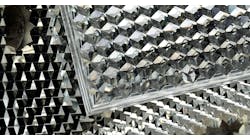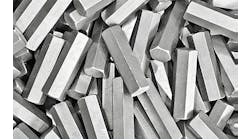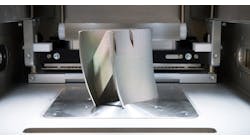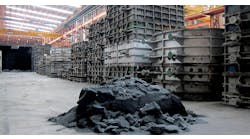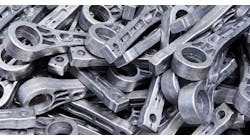Some metallurgical researchers are claiming progress in a technique for creating new alloys that offer mechanical strength and ductility, two material qualities that typically are thought to be in opposition. According to a paper published by researchers at the University of Pittsburgh Swanson School of Engineering, defects and structural instabilities that may reside in the metals can be harnessed to achieve more effective qualities.
Directed by Wei Xiong, assistant professor of mechanical engineering, the team at the Physical Metallurgy and Materials Design Laboratory there is designing metastable alloys that can overcome the tradeoff between strength and ductility in structural materials, and defining a technique for creating alloys suitable for a range of applications.
“Our work is showing how we can include intentional flaws in an alloy to make it stronger while retaining the ductility, or flexibility, of the material,” Prof. Xiong said. “The techniques we are developing can be used to make materials fit for earthquake construction, naval ships, aerospace, nuclear energy, or even transportation for oil or hydrogen—all applications where a strong but flexible material is crucial.”
This study looks at two mechanisms for metastability engineering that can be used to create strong, ductile alloys: transformation-induced plasticity (TRIP) and twinning-induced plasticity (TWIP). TRIP and TWIP use changes in the microstructure that occur under pressure, which cause some defects in the material, to form purposeful defects that improve the strength.
“Metastability” is a term used in chemical and physical studies to describe the bodies or systems that are apparently stable (having equilibrium) but capable of becoming unstable under particular circumstances, or over a period of time that is too long to be observed.
“You can think of the strength and ductility of a material like plastic versus glass,” explained Xiong. “Plastic is much more ductile and flexible: It is not as strong, but you can bend it with your hands.
“Glass is stronger than plastic, but it’s also much less flexible and will break if you try to bend it. This is the tradeoff that we are trying to overcome with alloys—something that has both strength and ductility.”
A graduate student at the Laboratory, Xin Wang, along with Xiong and researchers at the Illinois Institute of Technology and Northwestern University, recently authored “Design metastability in high-entropy alloys by tailoring unstable fault energies,” published in Science Advances. In it, Wang and the coauthors describe how to design metastable high-entropy alloys (HEAs), and report the results for seven alloys they have discovered with “experimentally observed” metastability.
“We propose unstable fault energies as the more effective design metric and attribute the deformation mechanism of metastable, face-centered cubic alloys to unstable martensite fault energy (UMFE)/unstable twin fault energy (UTFE) rather than intrinsic stacking fault energy (ISFE,)” they write.
The CALPHAD (calculation of phase diagrams) modeling supported by density functional theory calculations provides fundamental knowledge that can be applied to developing metastable alloys with “transformation-/twinning-induced plasticity (TRIP/TWIP)” for enhanced strength-ductility synergy.
The same approach can be applied to concentrated alloys, like steel and nickel – which would theoretically open commercial applications for high-strength, high-ductility castings for structural applications.
“We want to understand the unstable microstructure so we can predict the instability, and then we can use the defects to further increase strength and elongation,” according to Wang. “The resulting material is then self-strengthening—deform it, and it actually gets stronger.”

